Why home fire safety guide comes first in your mind? One of the most terrible things that can happen to a family is a house fire. Numerous thousands of Americans experience home fire-related injuries, property loss, and fatalities every year.
Statista shows in a graph that 3,800 civilians died as a result of fires in the United States in 2021. The number of civilian deaths from fires in the nation increased from the previous year, when there were 3,500 such deaths. See the graph:
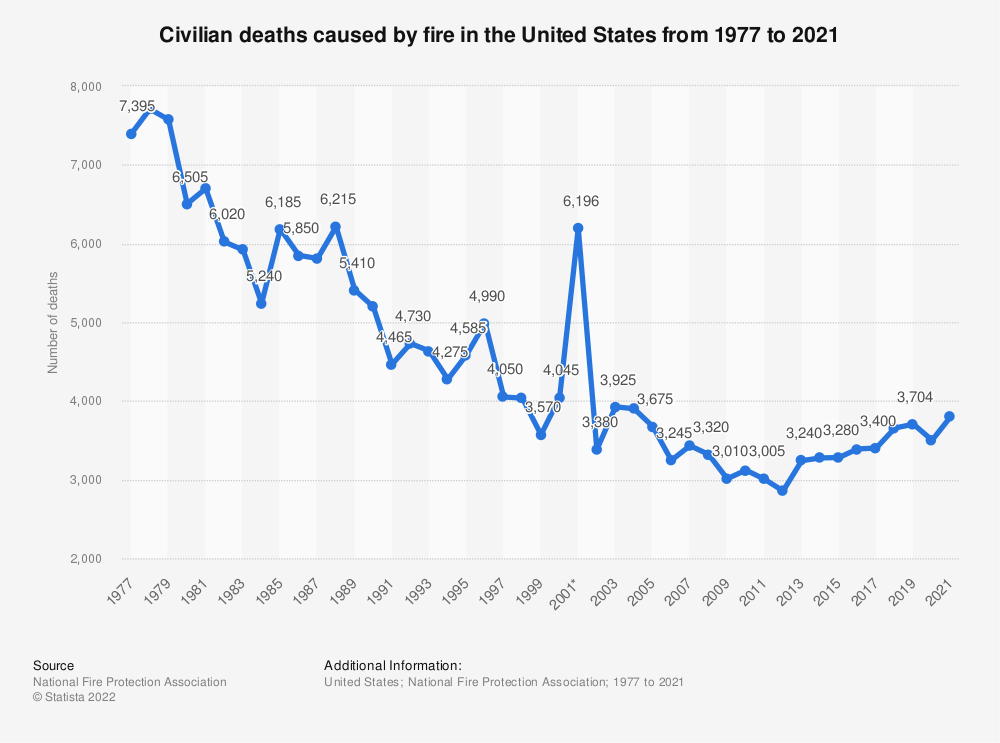
The uprising death toll shows its strategic fighting demands.
In terms of property losses, Statista shows that about 1.73 billion dollars in property was destroyed by fire in apartment buildings in 2021. One- and two-family dwellings sustained further property damage from structure fires totaling 6.97 billion dollars in value. Find in the graph:
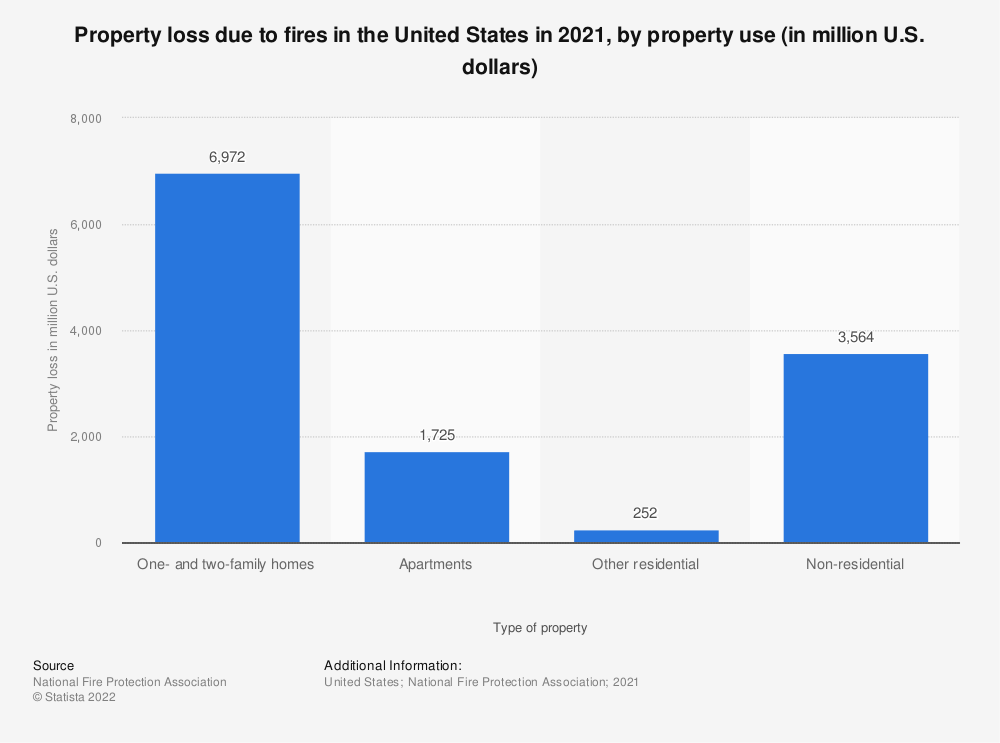
The graph shows the severity of home-based property losses.
While some fires are unavoidable, many can be prevented by following simple safety measures. This guide provides information and answers to frequently asked questions about home fire safety to help protect your family and home.
Note: This article may contain affiliate links, which means I may receive a thin commission, at no cost to you, if you buy through the link. Learn more in disclaimer.
Home Fire Safety Guide Through Some Essential FAQ
1. What Causes Home Fires?
There are many reasons why fires occur in the home. The most common causes include:
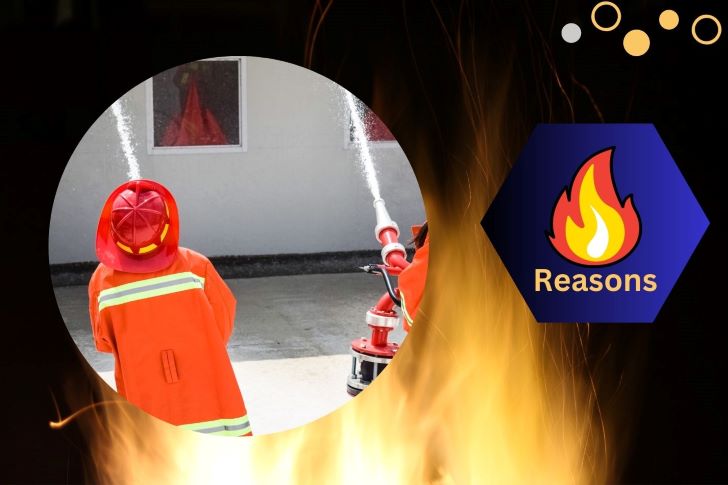
Cooking: In the US, unattended cooking is the main factor in house fires. Over 50% of home fires are started by cooking appliances including stoves, ovens, and toasters.
Heating: Heating equipment such as furnaces, boilers, and fireplaces can also cause fires if not properly maintained.
Electrical: Another typical source of house fires is electrical apparatus, including wiring, appliances, and lighting fixtures.
Smoking: Smoking is a leading cause of home fires, especially if smoking materials are not properly disposed of.
Children: Children playing with fire or being unsupervised near fires can result in fatalities or serious injuries.
Candles: Unattended candles are another common cause of home fires.
2. What Can I Do to Prevent Home Fires?
To prevent home fires, follow these safety tips:
(a) Cooking: Stay in the kitchen while cooking, and keep a fire extinguisher nearby.
(b) Heating: Keep heating equipment in good working order and keep flammable things away from it.
(c) Electrical: Use caution with electrical equipment, and have it inspected regularly by a professional.
(d) Smoking: Make sure all ashtrays and other smoking materials are disposed of appropriately and refrain from smoking in bed.
(e) Children: Teach children about the dangers of fire, and supervise them around fires.
(f) Candles: Keep candles away from flammable materials, and blow them out when leaving the room.
3. What is a Home Fire Escape Plan?
A home fire escape plan is a plan that outlines what steps to take in the event of a fire.
To ensure that everyone in the house knows what to do in the event of a fire, a plan must be in place. To construct a fire escape plan, take the following actions:
(a) Map out your home: Draw a map of your home, and mark all exits and windows.
(b) Identify two ways out of each room: Make sure everyone knows of two ways to escape from each room.
(c) Establish a meeting place: Choose a meeting place outside of the home where everyone can gather after escaping.
(d) Practice your plan: Practice your fire escape plan regularly with your family, and make sure everyone knows what to do.
(f) Available equipment: Make sure you have adequate amount of all escaping equipment such as fire escape ladder, fire blanket, and so on at your convenient place and can use them immediately.
4. What is a Fire Extinguisher?
A fire extinguisher is one of the essential type of firefighting devices used to put out fires. There are several different types of fire extinguishers, including:
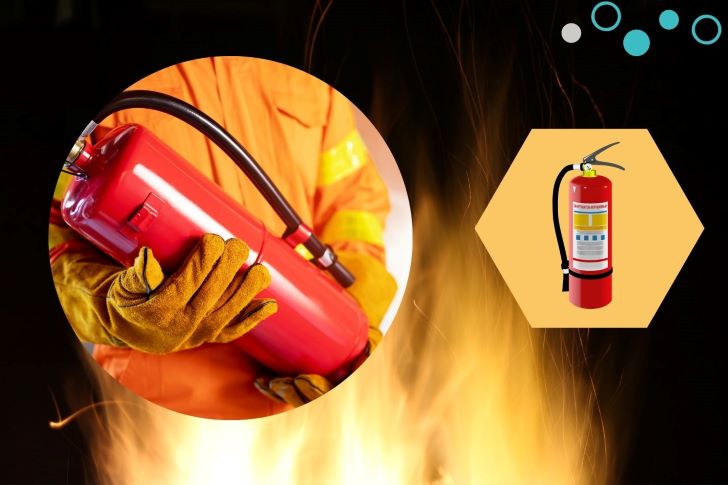
(a) Class A: Used for fires involving ordinary combustibles such as paper, wood, and cloth.
(b) Class B: Used for fires involving flammable liquids and gases.
(c) Class C: Used for fires involving electrical equipment.
(d) Class D: Used for fires involving combustible metals.
(e) Class K: Used for fires involving cooking oils and fats.
Before buying a fire extinguisher for your home, make sure it has all the up-to-date properties and good reviews by the real users. We recommend a best seller extinguisher from a reputed brand that have no chance to get unprepared.
5. Where Should I Keep a Fire Extinguisher?
A fire extinguisher should be kept near the kitchen, near an exit, and on every level of the home. It is also a good idea to keep one in the car in case of a car fire.
It is important to note that a fire extinguisher is a safety tool, not a cure-all. If a fire is too large or spreads too quickly, evacuate the home immediately and call 911.
6. What is a Smoke Alarm?
A smoke alarm is a device that detects smoke and alerts you of a fire. Smoke alarms can save lives by giving you early warning of a fire, allowing you to evacuate the home quickly.
It is recommended to have smoke alarms on every level of your home, near each bedroom, and in the kitchen.
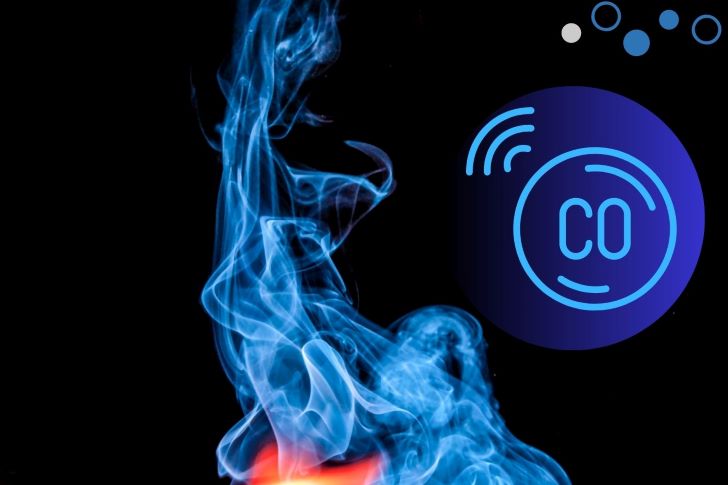
A smoke alarm can help stop an incident at the initial stage.
7. What Type of Smoke Alarm Should I Use?
There are two types of smoke alarms: ionization and photoelectric. Ionization smoke alarms are quicker to detect fast-flaming fires, while photoelectric smoke alarms are quicker to detect slow-smoldering fires.
It is recommended to use both types of smoke alarms in your home for maximum protection.
8. How Do I Maintain My Smoke Alarms?
To ensure that your smoke alarms are working properly, follow these maintenance tips:
(a) Test your smoke alarms monthly: Push the test button to make sure the alarm is working.
(b) Replace batteries yearly: Replace the batteries in your smoke alarms once a year, or when the low battery signal sounds.
(c) Replace smoke alarms every 10 years: Smoke alarms should be replaced every 10 years to ensure they are working properly.
9. What Should I Do if I Hear a Smoke Alarm?
If you hear a smoke alarm, follow these steps:
(a) Evacuate the home immediately: Leave the home immediately, and do not stop to gather belongings.
(b) Call 911: Call 911 from a safe location to report the fire.
(c) Meet at your designated meeting place: Meet at your designated meeting place to make sure everyone is safe.
10. What Should I Do in Case of a Fire?
If a fire occurs in your home, follow these steps:
(a) Evacuate the home immediately: Leave the home immediately, and do not stop to gather belongings.
(b) Call 911: Call 911 from a safe location to report the fire.
(c) Meet at your designated meeting place: Meet at your designated meeting place to make sure everyone is safe.
(d) Do not re-enter the home: Do not re-enter the home until it is safe to do so.
In conclusion, home fires are a serious threat to families in the USA. By following simple safety measures and having a plan in place, you can reduce the risk of home fires and protect your family and property.
Remember to have working smoke alarms, maintain your heating and electrical equipment, and practice your fire escape plan regularly. If a fire occurs, evacuate the home immediately and call 911.
11. What are the home fire safety products I need to use for prevention?
To prevent home fires, there are several safety products that you should use in your home. Here are some of the most important ones:

Appropriate resources need to be got ready.
(a) Smoke Alarms: As discussed earlier, smoke alarms can alert you of a fire, allowing you to evacuate your home quickly. It is recommended to have smoke alarms on every level of your home, near each bedroom, and in the kitchen.
(b) Fire Extinguishers: A fire extinguisher can help put out small fires, buying you valuable time to evacuate the home. Keep fire extinguishers in accessible locations throughout your home and your car.
(c) Carbon Monoxide Detectors: Carbon monoxide is a colorless, odorless gas that can be deadly if inhaled. Carbon monoxide detectors alert you of elevated levels of carbon monoxide, allowing you to evacuate your home.
(d) Fire Escape Ladders: If your home has multiple levels, fire escape ladders can provide an escape route in case of a fire. Make sure to place fire escape ladders in each room on the second floor or higher.
(e) Fire-resistant materials: Use fire-resistant materials in your home, such as fire-resistant curtains, rugs, and furniture.
In conclusion, home fires are a serious threat to families, but by using the right safety products, you can reduce the risk of home fires and protect your family and property.
Remember to have working smoke alarms, maintain your heating and electrical equipment, and practice your fire escape plan regularly.
If a fire occurs, evacuate the home immediately and call 911. Investing in these safety products can provide peace of mind and added protection for you and your loved ones.
12. How To Protect Valuables from Fire in the Home?
The home valuables could be well-protected by a fireproof box since they are built to resist fire. A high-quality box will have at least two layers of steel and be made of non-conductive, heat-resistant materials like cement, perlite, gypsum, or vermiculite. Fireboxes come in a wide range of sizes and functions.
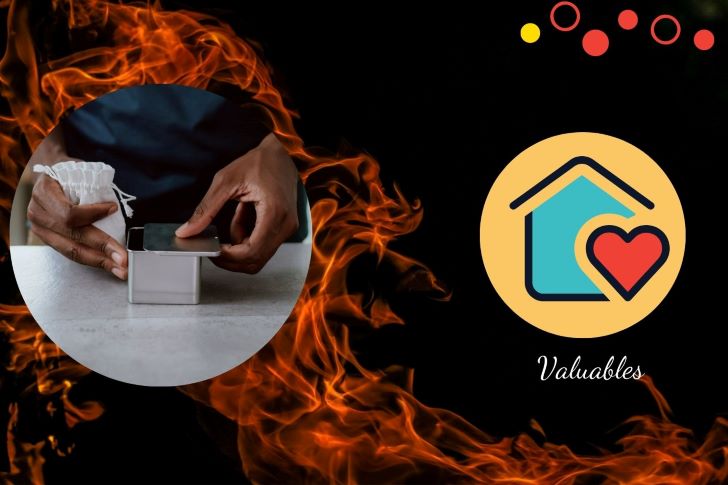
A fireproof safe box can help to protect valuables.
Keeping docs in a fireproof bang-in-the-box can protect double times from fire. A fireproof bag may keep the docs protected up to 2,000 degrees Fahrenheit.
Protecting valuables from fire in the home can be a daunting task, but there are several steps you can take to minimize the risk of losing your valuable items in a fire:
(a) Invest in a fireproof safe: A fireproof safe is one of the most effective ways to protect your valuables from fire. Look for a safe that has been tested and certified to withstand high temperatures for at least an hour. Keep safe in a location that is away from potential fire hazards, such as electrical outlets or heating sources.
(b) Keep important documents in a fire-resistant container: In addition to a safe, you can keep important documents such as passports, birth certificates, and insurance policies in a fire-resistant container. Look for a container that is made from materials that can withstand high temperatures, such as steel or ceramic.
(c) Use a safety deposit box: Consider storing your valuable items in a safety deposit box at a bank or other secure location. This is a secure way to protect your items from both fire and theft.
(d) Keep duplicates of important documents and valuable items: Make copies of crucial documents, and store them somewhere else, such as a safety deposit box or with a family member or acquaintance you can trust. To make sure you have access to them in case of an emergency, you can also keep extras of your priceless possessions in a different area.
(e) Install smoke detectors and fire extinguishers: Smoke detectors and fire extinguishers can help you detect and put out fires quickly, minimizing the risk of damage to your valuables and other belongings. Make sure to test your smoke detectors regularly and keep your fire extinguishers in a location that is easily accessible.
Finally, protecting your valuables from fire requires careful planning and preparation. A safety deposit box, purchasing a fireproof safe or container, maintaining duplicates of precious goods and vital documents, installing smoke alarms, and using fire extinguishers are all practical strategies to reduce the risk of losing your valuables in a fire.
By taking these steps, you can have peace of mind knowing that your valuables are protected in case of an emergency.
13. How I can Make A Most Effective Home Fire Safety Plan?
Making a home fire safety plan is crucial for protecting your family and property in case of a fire. Here are the steps you can follow to create an effective home fire safety plan:
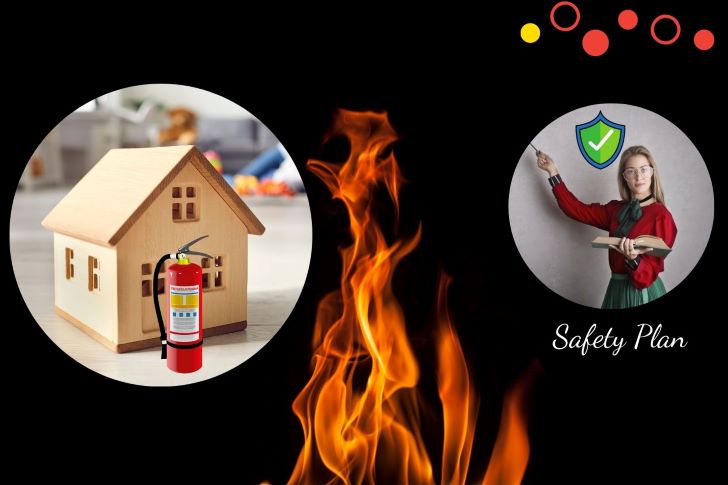
The home fire safety plan can mitigate the chance of fire.
(a) Designate a meeting place: Choose a safe and easily accessible location outside your home where everyone can meet in case of a fire.
(b) Create a fire escape plan: Draw a map of your home and plan two escape routes from each room. Make sure everyone in your home knows the escape routes and how to get out quickly.
(c) Practice the fire escape plan: Practice the fire escape plan regularly with everyone in your home, especially children. Make sure everyone knows what to do in case of a fire.
(d) Install smoke alarms: Install smoke alarms on every level of your home, near each bedroom, and in the kitchen. Make sure everyone in your home knows the sound of the smoke alarms.
(e) Teach everyone about fire safety: Teach everyone in your home about fire safety, including what to do in case of a fire, how to use fire extinguishers, and the dangers of fire.
(f) Install fire extinguishers: Keep fire extinguishers in accessible locations throughout your home and your car. Make sure everyone in your home knows how to use them.
(g) Maintain heating and electrical equipment: Regularly maintain heating and electrical equipment to reduce the risk of fires.
In conclusion, creating an effective home fire safety plan can save lives and protect your family and property in case of a fire.
You may lower the danger of home fires and give yourself and your loved ones peace of mind by establishing a meeting location, developing a fire escape plan, routinely practicing the plan, installing smoke alarms, educating everyone about fire safety, and maintaining heating and electrical equipment.
Remember, a fire can spread quickly and can be deadly, so it is important to have a plan in place and to evacuate your home immediately if a fire occurs.
14. What to do during a house fire and after a house fire?
The To-Dos During a House Fire:
(a) Stay calm and evacuate the home immediately: If a fire occurs, do not panic. Follow your fire escape plan and evacuate the home as quickly as possible.
(b) Close doors and windows behind you: Closing doors and windows behind you can help contain the fire and prevent it from spreading.
(c) Call 911: Call 911 immediately from a safe location outside the home. Provide your location and the details of the fire.
(d) Do not re-enter the home: Do not re-enter the home until instructed to do so by the fire department.
To-Dos After a House Fire:
(a) Contact your insurance company: Contact your insurance company as soon as possible to report the fire and begin the claims process.
(b) Document the damage: Take photos of the damage to your home and keep a record of all items that were destroyed or damaged in the fire.
(c) Secure the property: Make sure the fire department has secured the property and it is safe to enter. Board up windows and doors to prevent theft or further damage.
(d) Locate temporary housing: If your home is uninhabitable, locate temporary housing for you and your family.
(e) Contact utility companies: Contact utility companies to have your gas, electricity, and water turned off.
(f) Contact a restoration company: Contact a restoration company to clean up and repair the damage to your home.
(g)Seek support: Seek support from family, friends, and community resources to help you through the recovery process.
In conclusion, it is important to be prepared for a house fire and know what to do during and after a fire.
By following this to-do list, you can minimize the damage to your home, protect your family and property, and begin the recovery process.
Remember, if a fire occurs, evacuate the home immediately and call 911.
15. What are the essential fire safety resources?
Essential Fire Safety Resources:
(a) Smoke Alarms: Smoke alarms are the first line of defense against a fire and can save lives by providing early warning of a fire.
(b) Fire Extinguishers: Portable fire extinguishers can help put out a small fire before it becomes a large one.
(c) Fire Escape Ladder: A fire escape ladder can provide a secondary escape route from a second-story window.
(d) First-Aid Kit: A first-aid kit can provide basic medical supplies to help treat burns and other injuries in case of a fire.
(e) Emergency Supply Kit: An emergency supply kit should include essential items such as food, water, and clothing to help you survive for at least three days in case of a fire.
16. How to keep the Resources safe and prepared?
Keeping Essential Fire Safety Resources Up to Date and Prepared:
(a) Test smoke alarms: Test smoke alarms monthly and replace batteries annually or when the alarm sounds.
(b) Check fire extinguishers: Check fire extinguishers monthly to make sure they are in good working order and replace them if they are expired.
(c) Inspect fire escape ladder: Inspect the fire escape ladder annually and replace it if it is damaged or worn.
(d) Keep a first-aid kit and emergency supply kit updated: Keep the first-aid kit and emergency supply kit updated with fresh supplies and replace items as they expire.
(e) Regularly check electrical and heating equipment: Regularly check electrical and heating equipment to make sure it is in good working order and replace it if it is damaged or worn.
In conclusion, essential fire safety resources such as smoke alarms, fire extinguishers, fire escape ladders, first-aid kits, and emergency supply kits are crucial for protecting you and your family in case of a fire.
By testing and maintaining these resources regularly, you can ensure they are up to date and prepared to help you in case of an emergency.
Remember, preparation is key in reducing the risk of fire and protecting you and your family.
Conclusion
It is sagacious, if you may have an intention to learn the popular books on fire fighting issues, such as:
- Home Fire Escape Plan
- Firefighters' Handbook
- Strategy of Firefighting
- Structural Firefighting
Since prevention is better than cure, so make sure you have planned essential things as pointed in the crucial FAQ of home fire safety guide. Very best to take a local expert's consultation on your all sort of potential risks around your home. It is worthy obviously if you have a learning habit on national fire data as well.